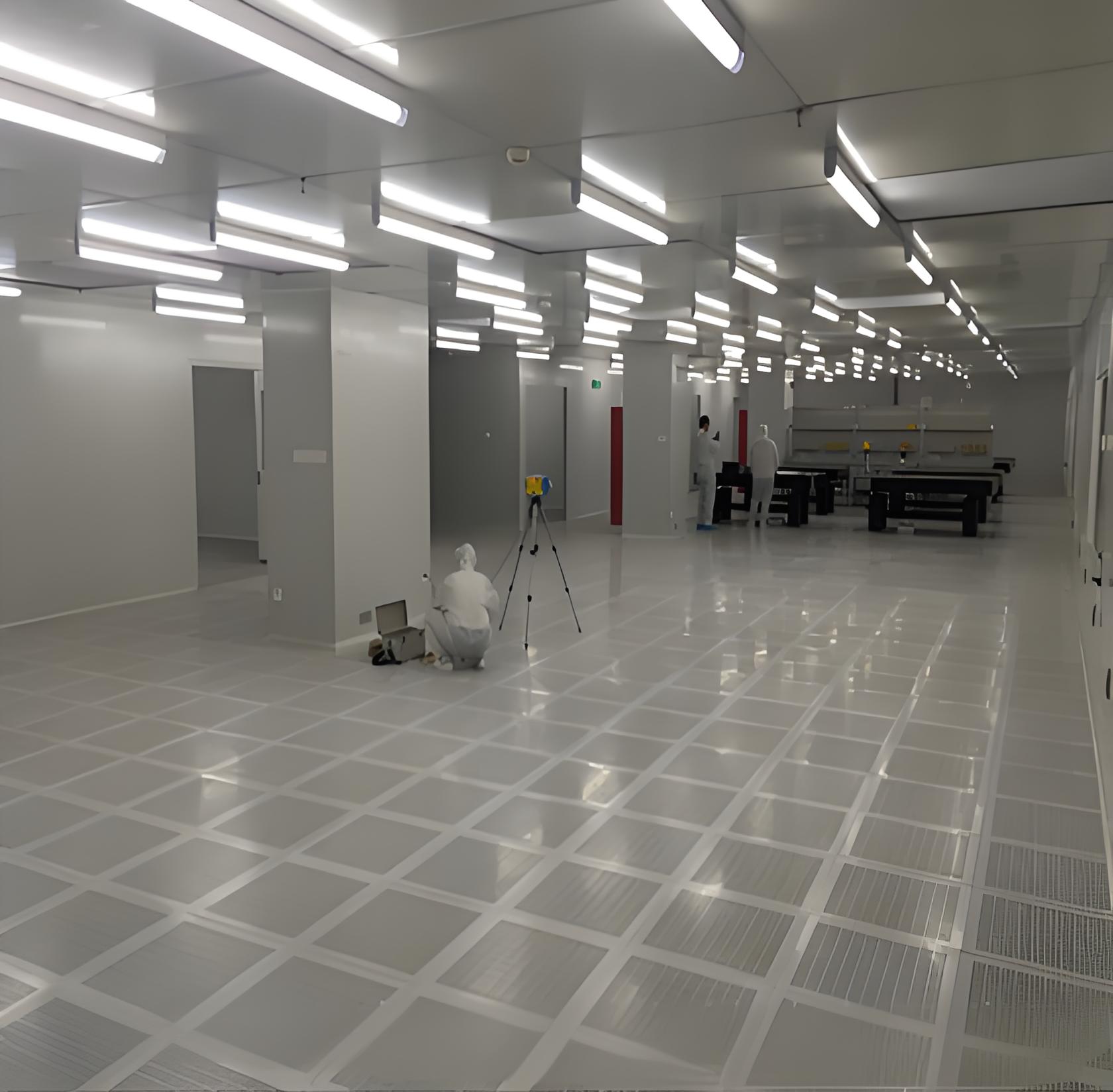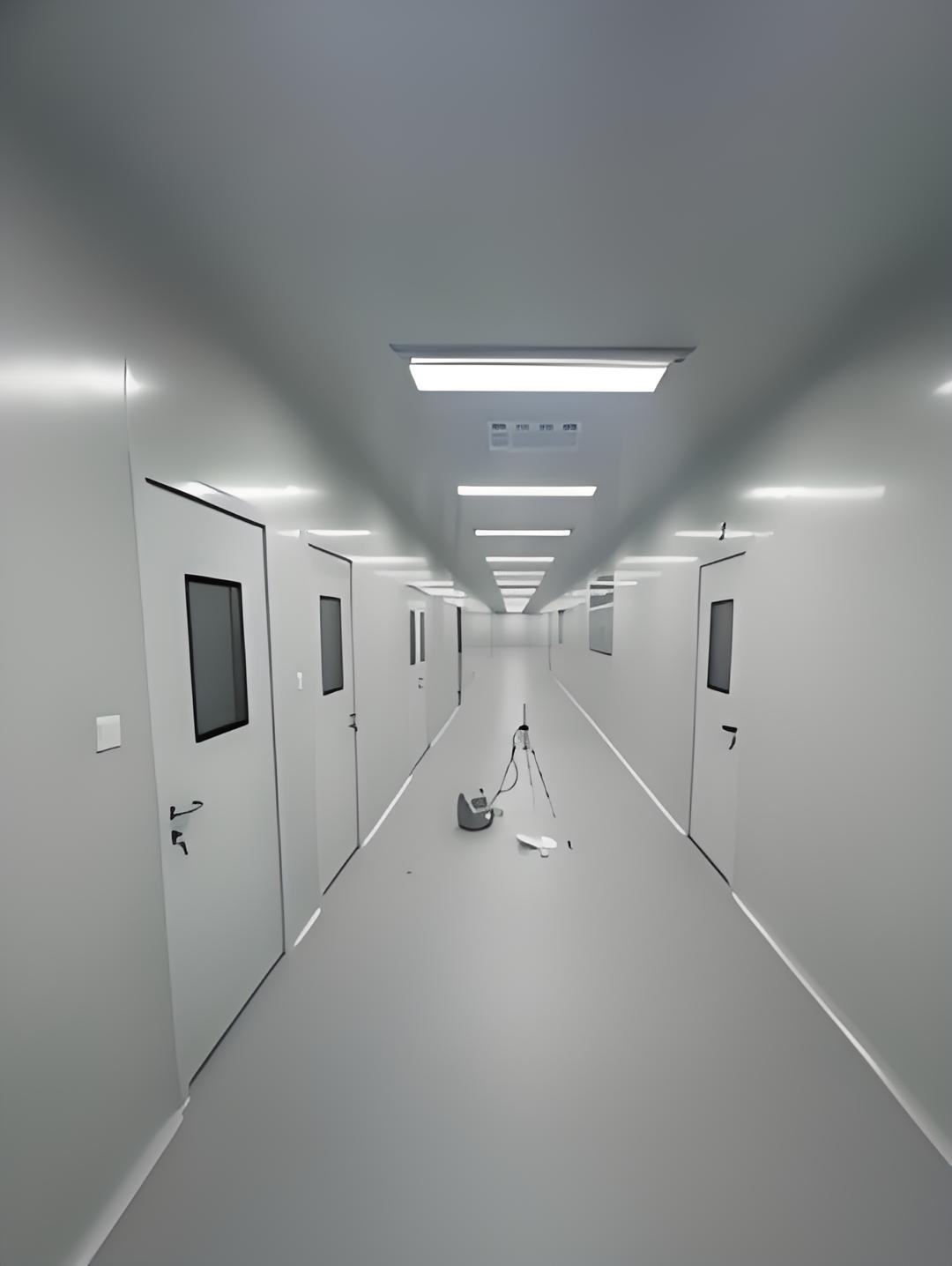




In today's rapidly advancing biotechnology, pharmaceutical, and life sciences industries, the need for controlled environments is more critical than ever. A bio clean room is a specialized facility designed to maintain extremely low levels of pollutants, such as dust, airborne microbes, and chemical vapors, ensuring the integrity of sensitive biological processes. Whether for drug manufacturing, genetic research, or medical device production, a biological cleanroom plays a vital role in safeguarding product quality and compliance. However, designing, building, and maintaining these spaces comes with unique challenges. This article explores key aspects of bio clean room implementation, including the role of a bio clean room design and build contractor and the benefits of turnkey cleanroom solutions. We'll delve into common problems faced during these projects and provide practical strategies to address them, helping you achieve a successful outcome.

A bio clean room is a controlled environment where contamination is meticulously managed to support biological applications. Unlike standard cleanrooms, which might focus on particulate control for electronics or aerospace, a biological cleanroom emphasizes biological safety, often incorporating features like HEPA filtration, positive pressure systems, and sanitizable surfaces to prevent microbial growth. These rooms are classified under standards such as ISO 14644 (for air cleanliness) and GMP (Good Manufacturing Practices), with classifications ranging from ISO 5 (class 100) to ISO 8 (class 100,000), depending on the application. For instance, in vaccine production, even minor contaminants can compromise entire batches, making the bio clean room indispensable. The design must account for factors like airflow patterns, material compatibility, and human traffic to minimize risks. As industries evolve, the demand for precision in biological cleanroom environments grows, highlighting the need for expert planning. This is where engaging a specialized bio clean room design and build contractor becomes crucial, as they bring expertise in integrating these elements seamlessly. Moreover, opting for turnkey cleanroom solutions can streamline the process, from conception to operation, reducing downtime and ensuring compliance. Understanding the fundamentals of a bio clean room is the first step toward avoiding common pitfalls, which we'll explore in subsequent sections.
When embarking on a bio clean room project, one of the most critical decisions is selecting the right bio clean room design and build contractor. These professionals are responsible for translating your requirements into a functional, compliant facility. A reputable contractor will have experience in biological cleanroom projects, understanding the nuances of regulatory standards like FDA guidelines or EU GMP. They handle everything from initial design—considering layout, HVAC systems, and material selections—to construction, commissioning, and validation. For example, a bio clean room design and build contractor might use computational fluid dynamics (CFD) modeling to optimize airflow, ensuring uniform particle distribution. This expertise is vital because poor design can lead to hotspots of contamination, validation failures, or costly rework. Additionally, a contractor often coordinates with subcontractors, such as mechanical engineers or validation specialists, to ensure all components align. In contrast, a DIY approach or hiring inexperienced firms can result in delays and non-compliance. This is why many organizations turn to turnkey cleanroom solutions, where the contractor manages the entire project lifecycle. By partnering with a skilled bio clean room design and build contractor, you mitigate risks and ensure that your biological cleanroom meets performance benchmarks from day one. However, even with expert help, challenges arise; we'll discuss these later, including how a contractor can preemptively address them.
Turnkey cleanroom solutions offer a comprehensive approach to bio clean room development, where a single provider handles design, construction, equipment installation, and validation. This integrated method is particularly beneficial for biological cleanroom projects due to their complexity. One key advantage is time efficiency: with a unified team, communication is streamlined, reducing the delays common in multi-vendor setups. For instance, a turnkey cleanroom solutions provider can simultaneously coordinate electrical work with HVAC installation, avoiding conflicts that might arise with separate contractors. Cost control is another benefit, as fixed-price contracts often include all aspects, preventing budget overruns from unexpected issues. Moreover, turnkey cleanroom solutions ensure consistency in quality, as the provider is accountable for the entire system, from wall panels to monitoring systems. This is crucial for a bio clean room, where every component must work harmoniously to maintain cleanliness. Additionally, these solutions often include post-installation support, such as training and maintenance, which helps in long-term sustainability. When combined with the expertise of a bio clean room design and build contractor, turnkey cleanroom solutions can accelerate project timelines and enhance reliability. However, selecting the right provider requires due diligence; we'll cover common problems in vendor selection in a later section. Overall, for organizations seeking a hassle-free path to a compliant biological cleanroom, turnkey cleanroom solutions represent a strategic choice that minimizes risks and maximizes efficiency.
One of the most frequent issues in bio clean room projects is inadequate planning, which can stem from unclear objectives or underestimating regulatory requirements. A poorly designed biological cleanroom may fail validation tests, leading to costly modifications. For example, if airflow patterns aren't optimized, particles can accumulate in critical zones, compromising sterility. This often occurs when teams skip detailed risk assessments or fail to involve a bio clean room design and build contractor early. Design flaws might include improper room pressure differentials, which are essential for containing contaminants, or insufficient space for equipment and personnel movement. To overcome this, start with a comprehensive feasibility study that defines the bio clean room's purpose, classification, and workflow. Engage a experienced bio clean room design and build contractor during the conceptual phase to conduct site evaluations and model scenarios using tools like BIM (Building Information Modeling). Additionally, turnkey cleanroom solutions can help by providing a structured planning framework that integrates design with construction. By addressing these aspects upfront, you can avoid redesigns and ensure your biological cleanroom meets all specifications from the outset.
Budget overruns are a common headache in bio clean room projects, often due to hidden costs like change orders, material price fluctuations, or regulatory updates. A biological cleanroom requires high-quality materials, such as stainless steel or non-shedding surfaces, which can be expensive. Moreover, unforeseen issues, such as site preparation needs or energy-intensive HVAC systems, can escalate expenses. Without careful management, a project intended to be cost-effective can spiral out of control. This is where a bio clean room design and build contractor with expertise in value engineering can make a difference, suggesting alternatives that maintain compliance while reducing costs. For instance, they might recommend modular components that are easier to install. Turnkey cleanroom solutions also aid in cost control by offering fixed-price agreements and transparent budgeting. To mitigate this problem, develop a detailed cost estimate during planning, including contingencies for unknowns. Regularly review expenditures with your bio clean room design and build contractor and consider phased implementations if funds are limited. By proactively managing finances, you can keep your bio clean room project on track without sacrificing quality.
Navigating regulatory requirements is a significant challenge in bio clean room projects. Agencies like the FDA or EMA have strict guidelines for biological cleanroom environments, covering aspects from air quality monitoring to documentation. Failure to comply can result in failed inspections, product recalls, or legal issues. Validation—proving that the bio clean room performs as intended—is particularly daunting, involving protocols like Installation Qualification (IQ), Operational Qualification (OQ), and Performance Qualification (PQ). Many organizations struggle with this due to lack of expertise or incomplete records. A skilled bio clean room design and build contractor can streamline compliance by incorporating regulatory standards into the design from the start. They often have experience with validation protocols and can coordinate testing efficiently. Turnkey cleanroom solutions frequently include validation services, reducing the burden on your team. To address this, invest in training for staff on GMP principles and maintain thorough documentation throughout the project. Engaging a bio clean room design and build contractor early ensures that compliance is baked into every step, minimizing last-minute surprises.

Even after a bio clean room is operational, maintaining contamination control remains a common problem. Factors like personnel behavior, equipment introduction, or environmental changes can introduce pollutants. A biological cleanroom requires rigorous cleaning protocols and continuous monitoring, which can be overlooked if not properly planned. For example, if gowning procedures aren't enforced, human shedding can compromise air quality. Maintenance challenges include filter replacements, calibration of sensors, and managing wear-and-tear on surfaces. These issues often arise from inadequate training or insufficient maintenance schedules. Partnering with a bio clean room design and build contractor who offers ongoing support can help establish preventive maintenance programs. Turnkey cleanroom solutions may include service agreements for regular checks. To overcome this, implement strict SOPs (Standard Operating Procedures), use real-time monitoring systems, and conduct regular audits. By prioritizing contamination control, you extend the lifespan of your bio clean room and ensure consistent performance.
Integrating a new bio clean room into an existing facility can lead to disruptions if not managed carefully. Space constraints, utility connections (e.g., power, water), and workflow interruptions are common issues. For instance, retrofitting a biological cleanroom into an older building might require upgrades to electrical systems or structural modifications. This can cause downtime and affect adjacent operations. A bio clean room design and build contractor with experience in retrofits can assess compatibility and propose solutions, such as modular designs that minimize impact. Turnkey cleanroom solutions often include phasing plans to coordinate with ongoing activities. To address this, conduct a thorough site survey and involve end-users in planning to align the bio clean room with daily workflows. By anticipating integration challenges, you can smooth the transition and maintain productivity.
Selecting inappropriate technology or equipment is a frequent pitfall in bio clean room projects. For a biological cleanroom, choices like HVAC systems, lighting, or monitoring devices must balance performance with energy efficiency. Opting for low-cost options might lead to higher long-term costs or non-compliance. For example, an undersized HVAC system could fail to maintain pressure differentials, risking contamination. This highlights the importance of involving a bio clean room design and build contractor who can recommend reliable vendors and technologies. Turnkey cleanroom solutions often include equipment packages that are pre-vetted for compatibility. To avoid this problem, prioritize scalability and future-proofing in selections. Test equipment during commissioning and consider lifecycle costs. By making informed choices, you ensure your bio clean room remains effective and adaptable.
Delays are common in bio clean room projects due to factors like supply chain issues, weather, or coordination failures. A biological cleanroom has many interdependent tasks, and any holdup can cascade. Poor project management, such as inadequate scheduling or communication gaps, exacerbates this. Engaging a bio clean room design and build contractor with strong project management skills can keep things on track through tools like critical path method (CPM) scheduling. Turnkey cleanroom solutions typically include dedicated project managers who oversee timelines. To mitigate delays, establish clear milestones, use collaborative software, and maintain open communication with stakeholders. By proactively managing the timeline, you can deliver your bio clean room on schedule.
In summary, a bio clean room is essential for industries requiring sterile environments, but its implementation involves challenges like planning flaws, budget issues, and compliance hurdles. By understanding these common problems and leveraging the expertise of a bio clean room design and build contractor, along with the efficiency of turnkey cleanroom solutions, you can navigate these complexities. Emphasize thorough planning, proactive risk management, and ongoing maintenance to ensure your biological cleanroom meets its goals. As technology advances, staying informed and partnering with reliable professionals will help you build a robust bio clean room that supports innovation and compliance for years to come.
This article has covered key aspects of bio clean room projects, providing insights to help you avoid pitfalls. If you're considering a new biological cleanroom, remember that early engagement with a qualified bio clean room design and build contractor and exploring turnkey cleanroom solutions can set the foundation for success.